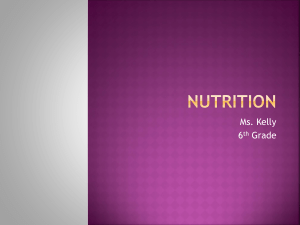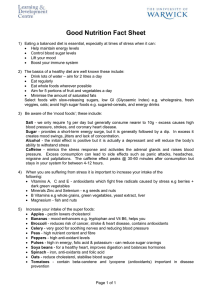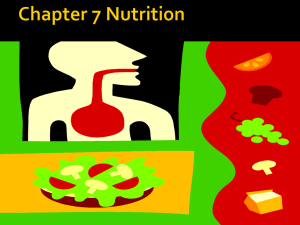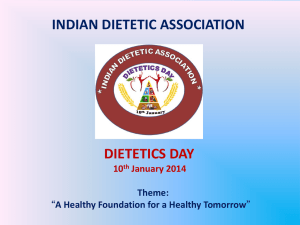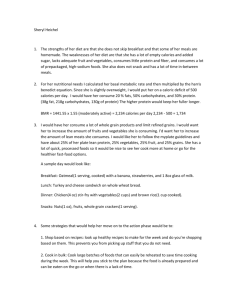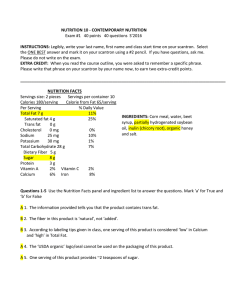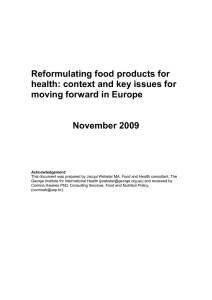Eating 101: The Basics of Good Nutrition
advertisement
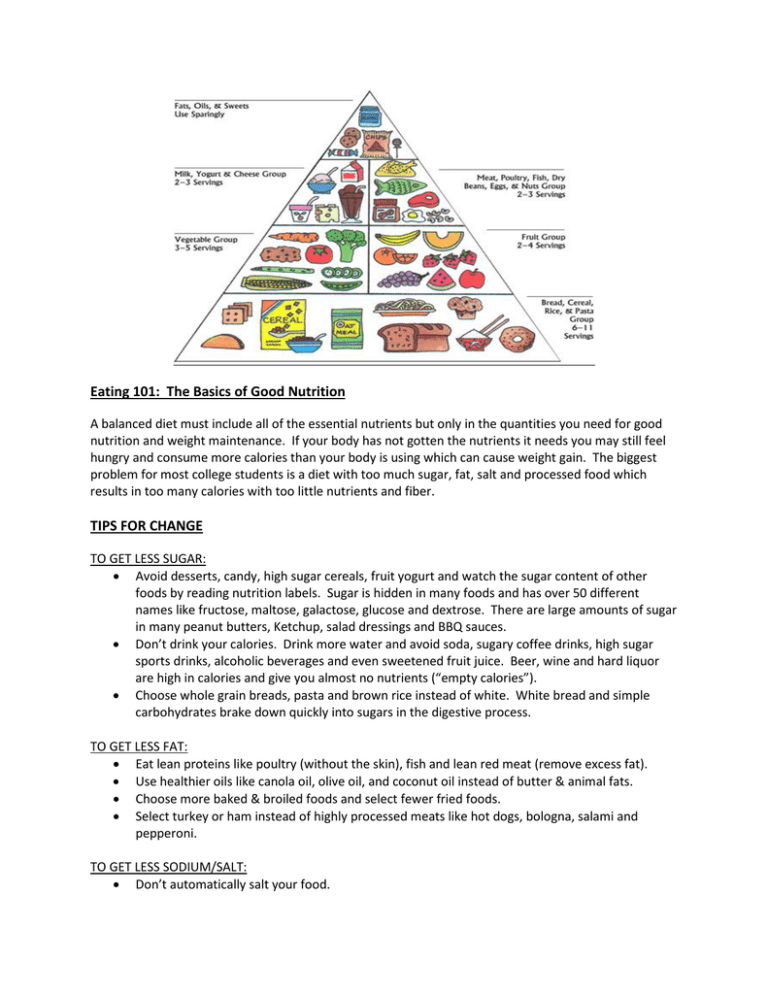
Eating 101: The Basics of Good Nutrition A balanced diet must include all of the essential nutrients but only in the quantities you need for good nutrition and weight maintenance. If your body has not gotten the nutrients it needs you may still feel hungry and consume more calories than your body is using which can cause weight gain. The biggest problem for most college students is a diet with too much sugar, fat, salt and processed food which results in too many calories with too little nutrients and fiber. TIPS FOR CHANGE TO GET LESS SUGAR: • Avoid desserts, candy, high sugar cereals, fruit yogurt and watch the sugar content of other foods by reading nutrition labels. Sugar is hidden in many foods and has over 50 different names like fructose, maltose, galactose, glucose and dextrose. There are large amounts of sugar in many peanut butters, Ketchup, salad dressings and BBQ sauces. • Don’t drink your calories. Drink more water and avoid soda, sugary coffee drinks, high sugar sports drinks, alcoholic beverages and even sweetened fruit juice. Beer, wine and hard liquor are high in calories and give you almost no nutrients (“empty calories”). • Choose whole grain breads, pasta and brown rice instead of white. White bread and simple carbohydrates brake down quickly into sugars in the digestive process. TO GET LESS FAT: • Eat lean proteins like poultry (without the skin), fish and lean red meat (remove excess fat). • Use healthier oils like canola oil, olive oil, and coconut oil instead of butter & animal fats. • Choose more baked & broiled foods and select fewer fried foods. • Select turkey or ham instead of highly processed meats like hot dogs, bologna, salami and pepperoni. TO GET LESS SODIUM/SALT: • Don’t automatically salt your food. • • • Flavor your food with spices other than salt. Choose more fresh foods, like fruits and vegetables & fewer processed foods such as canned foods. Cut back on condiments like ketchup, salad dressing, pickles and soy sauce. TO GET MORE FIBER: • Select more whole grain products such as oatmeal, whole grain bread, brown rice and avoid products made with white flour. • Eat more legumes such as split peas and kidney, pinto and black beans. • Choose more fresh vegetables and fruits (with skins) and fewer fried breaded or canned vegetables or fruits. If you would like more individualized help with your personal nutrition, call the Student Health Center for an appointment at 503-352-2269.
